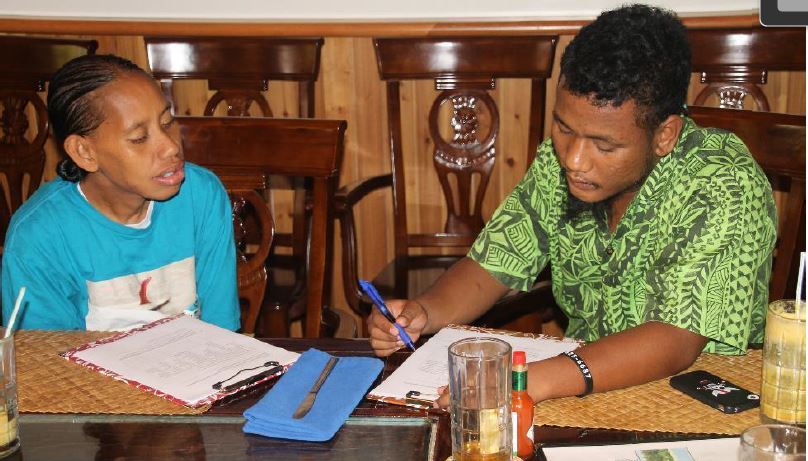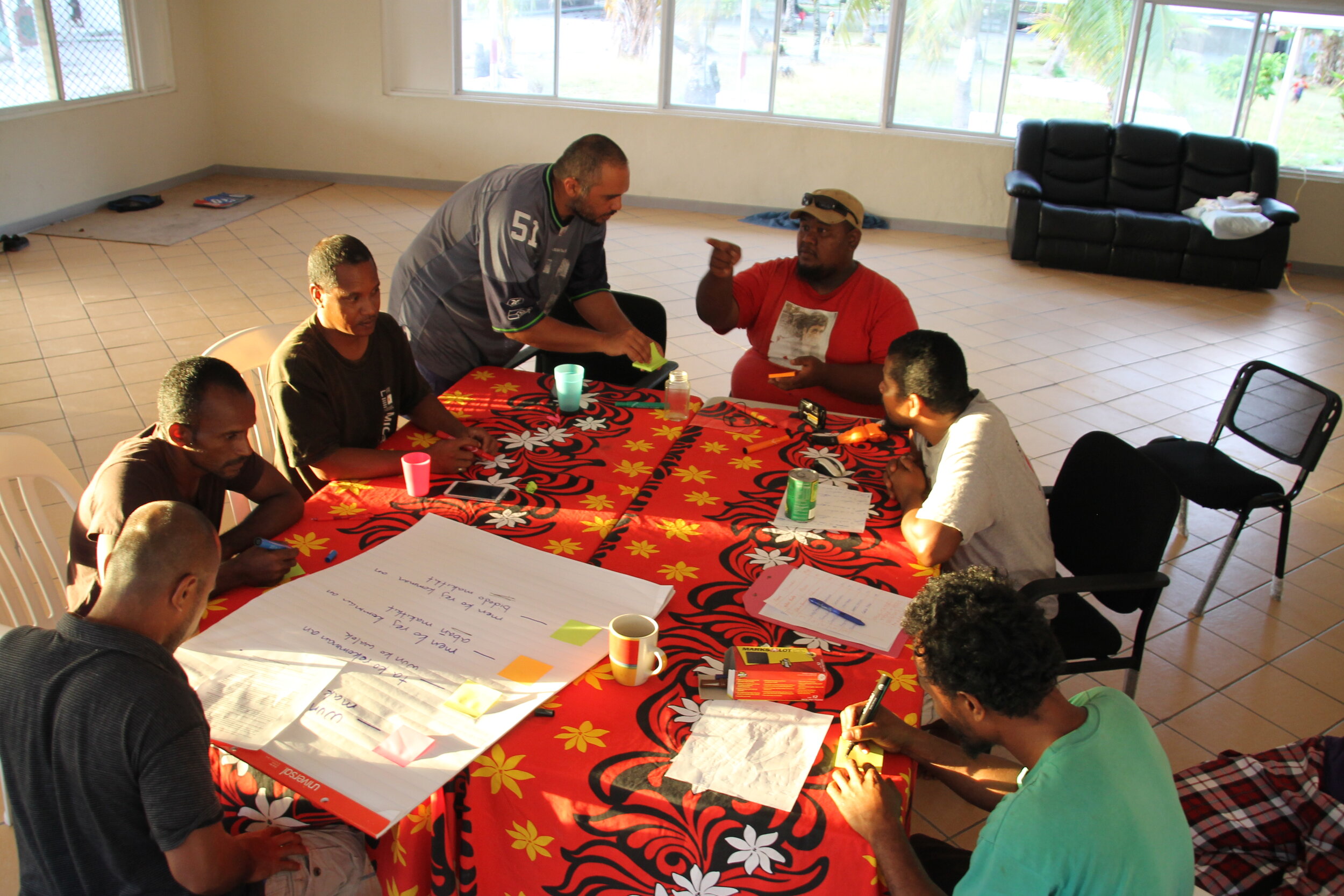Methods
(1) DESK STUDY
Our desk study entailed a review of published scientific literature, grey literature, available GIS layers and analysis, online databases, population censuses, and popular press articles. The team used these data to better understand the context in which Marshallese people make their migration decisions, as well as to create maps showing the spatial distributions of key variables in this research, and the linkages between them.
(2) PARTICIPATORY RESEARCH METHODS (RMI)
Participatory Research Approaches (PRA) can help local participants evaluate the challenges and issues they face in their local setting, develop solutions or actions to respond to local challenges, and generate reliable qualitative data in the framework of research (Chambers 2008). The PRA sessions yield qualitative and visual data. We conducted 4 types:
Transect Walk: This exercise helps to enhance the researchers’ spatial understanding of local perceptions of resources. During the walk, researchers ask questions about what they see to the villagers, and the path is discussed with local resource persons to make sure that there is sufficient variety in terms of the natural and socio-economic environment.
Contextual Change: During this exercise, participants produce a detailed list of perceived positive and negative changes in the study sites organized according to six ‘domains’: natural environment, the physical or built-up environment, human capital, the economic environment, social and political organization, and culture.
Fuzzy Cognitive Mapping: This PRA session aims to enhance the researchers’ understanding of how different factors influence migration and to understand the inter-linkages of these different factors. In the process, participants also enhance their understanding by critically examining migration decisions.
Mobility Mapping: This exercise explores the prevalent mobility patterns in a community, focusing on where people move and why.
(3) QUESTIONNAIRE (RMI & DESTINATION STATES)
A questionnaire was used in the RMI and in destination states. The statements in the destination areas in the U.S. focused more on the situation of migrants in the U.S., and how migration influenced well-being. In the RMI more emphasis was placed on environmental change, habitability, and future migration intentions. The questionnaires had sections concerning basic socio-demographic data, housing, impacts of environmental stressors, ecosystem services, perceptions of the importance of ecosystem services, the respondent’s migration history, the migration history of relatives and remittances, migration intentions, and policy interventions.
The questionnaire comprised mainly closed-ended questions generating quantitative information, but also included a few open-ended questions that generated qualitative information. An example of a closed-ended question used in the survey is:
“Compared to other houses in the village, is the location of your house relatively risky or safe in case of natural disasters, such as floods and storms? 1=Riskier| 2=Average | 3=Safer”. The follow-up question is open-ended: “If 1 or 3: Please explain what makes it riskier or safer.”
(4) Q METHODOLOGY (RMI & DESTINATION STATES)
In order to gain a deeper understanding of the range of attitudes on and perceptions of climate change, ecosystems, and migration reasons and outcomes, we conducted a Q-study. This is a method to investigate opinions on a particular issue by statistically analysing participants’ ranking of statements about the issue. Questionnaire respondents participate in the Q study. This enables an analysis of attitudes and perceptions among different categories of the survey population (e.g. men and women, migrants and non-migrants, poorer and richer households).
The methodology expands upon more traditional methods of data collection through the application of Q method. Q is a semi-qualitative, semi-quantitative approach to understand the accounts generated by individuals. Data is analyzed using data reduction methods to discern the existing patterns of ‘distinct perspectives, discourses, or decision-making styles’. [1] The data collected is quantitatively analyzed, however, its interpretation is extensively qualitative. Researchers can code and use results in partnership with other qualitative methods as well as a starting point for quantitative confirmatory methods.
[1] C. Zografos. Rurality discourses and the role of the social enterprise in regenerating rural Scotland. Journal of Rural Studies, 23(1):38–51, 2007.




